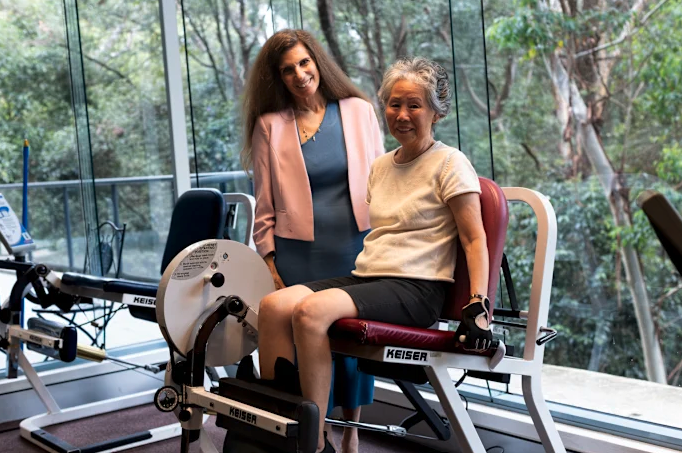Sydney grandmother Alice Chan is small, petite and softly spoken. A delicate jade pendant hangs around her neck. She’s one of the last people you’d expect to be working up a sweat on a bench press or a lat pulldown in the gym. But two years ago, a regular bone scan showed she had osteoporosis – frail or brittle bones. “I couldn’t believe it,” the 74-year-old says of the results. A walker all her life – and a practitioner of tai chi since she emigrated from her native Hong Kong to Australia as a 24-year-old – Chan had always regarded herself as fit. “Even my friends were surprised – how could someone as active as me have osteoporosis?”
Chan’s GP started her on six-monthly Prolia injections – the most commonly prescribed osteoporosis medication in Australia – which blocks the formation of cells that break down bone to help slow bone-density loss. When Chan sought acupuncture for knee pain, her acupuncturist suggested she see the geriatrician, Professor Maria Fiatarone Singh, whose office was downstairs. Fiatarone Singh prescribed Chan a twice-weekly, hour-long weight-lifting program. The weights felt “hard to lift” at first, Chan explains, as she cranks out another leg press. But her strength increased quickly and more weight was added every few weeks to maintain the intensity of the workout. “Maria explained to me that tai chi and walking were keeping me flexible and giving me aerobic exercise, but it wasn’t enough for my bones,” Chan says.
In January, Chan’s latest scan revealed increased bone mass. When she was first diagnosed, Chan’s spine had a bone-density score of –2.7 and her hip was –2.5. In people over 50, a healthy bone density is –1 or higher. A score of between –1 to –2.5 indicates bone loss or the precursor to osteoporosis, osteopenia. A score of –2.5 or lower signals osteoporosis. Chan’s spine is now at –2.4. “I had hoped I would just maintain my condition, but I had actually improved,” Chan says. Older people lose about 1-2 per cent of their bone density each year, so even maintaining bone density is a good result. “Sometimes I work out longer than my hour, because I enjoy the weights so much,” Chan adds.
This is an extract of a story which appeared in the 5 April 2025 edition of The Sydney Morning Herald’s Good Weekend magazine. You can read more here.
Pic: EDWINA PICKLES
